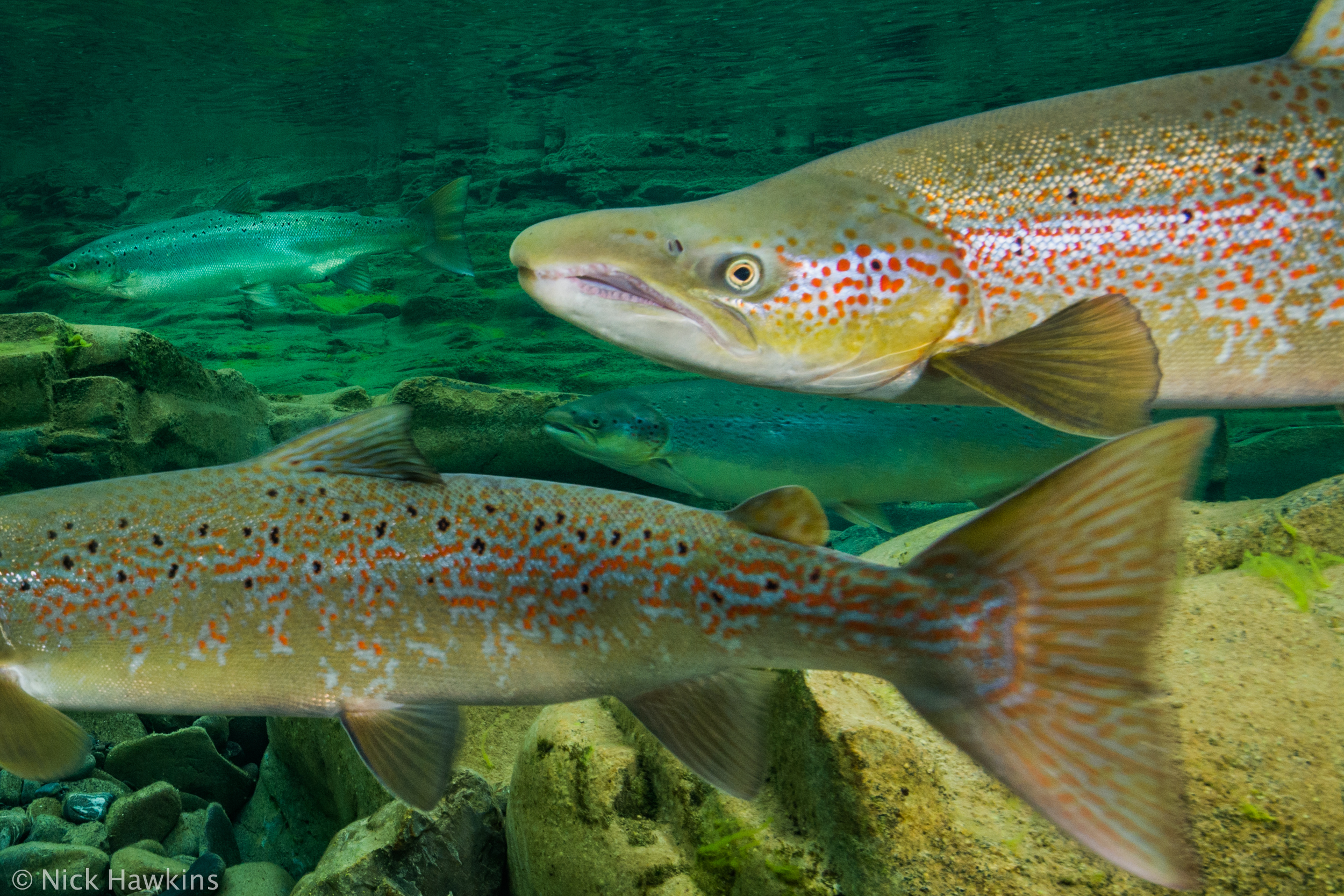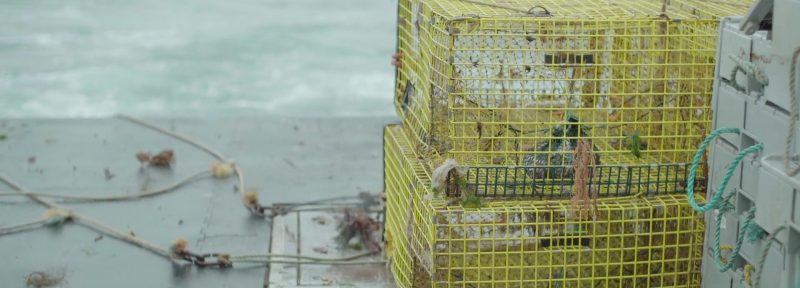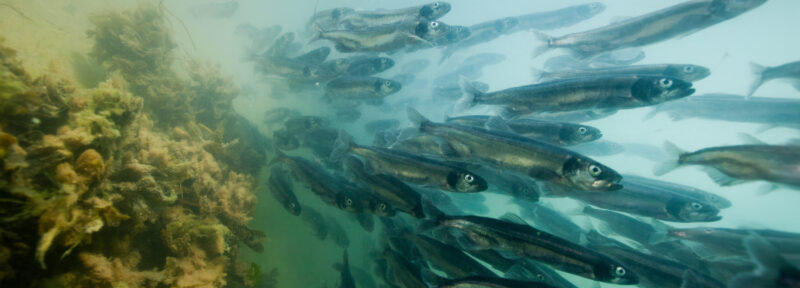eDNA Offers a Promising New Tool for Science and Conservation
An Atlantic salmon in the Gaspé Peninsula, Quebec.
Credit: Nick Hawkins
In the spring of 2019, Eddie Halfyard and his team of researchers set out for Nova Scotia’s eastern shore to survey for Atlantic salmon. Despite their name, Atlantic salmon are hard to track down in many parts of the East Coast these days, and especially in mainland Nova Scotia, where they are classified as a species-at-risk. Acid rain and poor land-use practices have taken their toll on wild salmon populations: they need clean, unobstructed rivers with relatively low acidity in order to breed.
Ten years ago, the Department of Fisheries and Oceans conducted river surveys in the eastern shore to determine if salmon were present there. A decade on, Halfyard, a research scientist with the Nova Scotia Salmon Association (NSSA) and Perennia, wanted to find out whether salmon were still returning to some of the rivers that were previously surveyed. “In order to protect and restore Atlantic salmon, we first need to know where they persist and how that is influenced by the quality of their habitat,” he said. But given the scarcity of wild Atlantic salmon, traditional survey methods like electrofishing—where researchers with electrified poles and battery packs scour the rivers, stunning fish and counting them—would take a lot of time and energy. So he turned to an emerging technology with a futuristic name: eDNA.
There is growing interest in Atlantic Canada and around the world about how eDNA can be used to further scientific research. Researchers are using it to monitor polar bear populations, find out whether ships are obeying rules about ballast water, and even track invasive Burmese pythons in Florida. But what is eDNA, and how does it work?
Environmental DNA (or eDNA) is DNA that is taken from the environment—oceans, rivers, soil, air—rather than sampled directly from an individual plant or animal. All species leave particles in the environment that contain DNA, such as fecal matter, skin cells, and gametes. Even a small sample of water can contain enough DNA to give researchers a lot of information. This DNA data can be used to identify an individual species of interest (such as Atlantic salmon), see all the different species that are present, or even get a rough estimate of how abundant a particular species is in a given area.
Collecting eDNA is also less invasive than using traditional sampling methods. In order to find out what is living in a particular place, you usually need to collect samples of the species. This can understandably put stress on the organisms that researchers are trying to study—in the case of sampling techniques such as bottom-trawl surveys, where a net is dragged along the seafloor, they can even damage fragile ecosystems. Right now, eDNA testing is often used to complement existing methods, but in the future, researchers may be able to use it on its own. In the right circumstances, this could save money, time, and make sure researchers aren’t harming the things they’re studying.
However, eDNA is still growing as a science, and there are many questions left to solve. At a 2019 workshop for eDNA researchers in Atlantic Canada, hosted by Oceans North and the NSSA, participants noted a few of these challenges. For example, environments are always changing over time: if you sample a particular area in the spring, you might find different things than if you sampled it in the fall. It’s important for researchers to gather data regularly and establish baselines, and for this information to be available to others. Some environments also change faster than others. In the Bay of Fundy, extreme tides move vast quantities of water every day, which means that DNA might not stick around for very long in one place or could be brought in from somewhere else far away. There are meaningful differences between the environments samples are taken from, as well: DNA lasts much longer in sediment (mud) than it does in water.
After testing for eDNA and water quality in 30 rivers ranging from Dartmouth to Guysborough, Halfyard and his team eventually found that the Atlantic salmon distribution along Nova Scotia’s eastern shore has not changed significantly in the last decade and is strongly influenced by river pH (a measure of acidity). Despite declines in the overall salmon population, many rivers still support some salmon, and those that do not have been significantly impacted by acidification.
“The results show that it is not too late. Targeted efforts at restoring and improving habitat will allow Atlantic salmon to recover,” Halfyard said.
In the meantime, Halfyard is using all the scientific tools at his disposal—including eDNA—to learn more about Atlantic salmon and how we can ensure they thrive in the future.
To learn more about the Nova Scotia Salmon Association’s work, visit their website.
Alex Tesar is a communications specialist with Oceans North.





